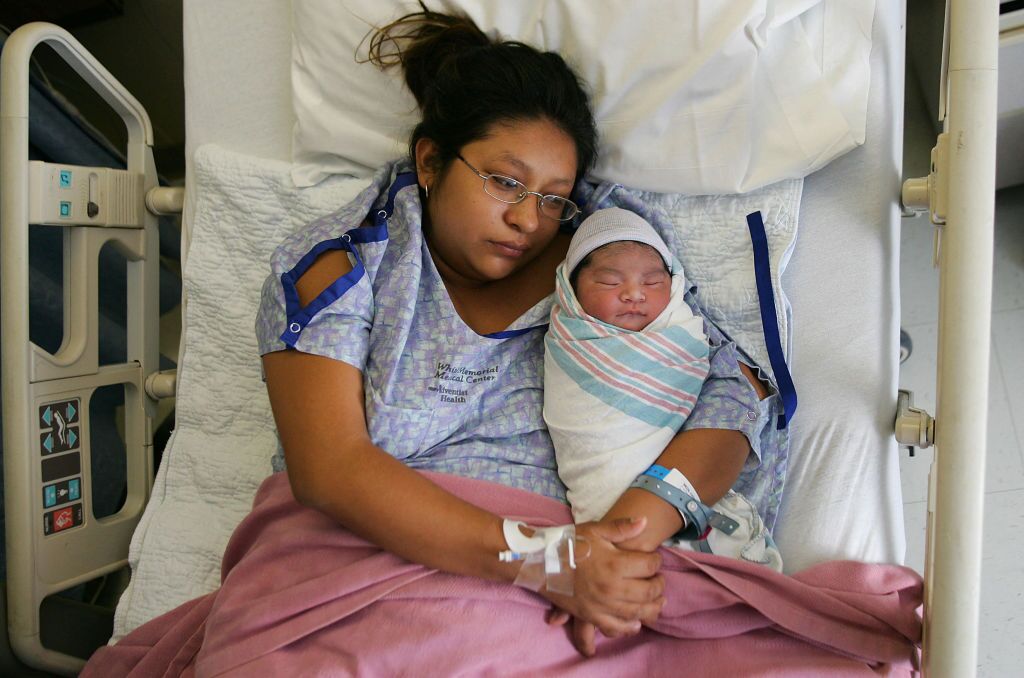
The Supreme Court Put Nationwide Injunctions to the Torch
June 28, 2025
A Sports Drama Told at 200 Miles an Hour
June 28, 2025Grassroots midwives and community birthworkers are fighting to protect Black and Indigenous maternal health, while Congress threatens to gut it.
This essay is part of an ongoing Gender & Democracy series, presented in partnership with Groundswell Fund and Groundswell Action Fund, highlighting the work of Groundswell partners advancing inclusive democracy. You’ll find stories, reflections and accomplishments—told in their own words—by grassroots leaders, women of color, Indigenous women, and trans and gender-expansive people supported by Groundswell. By amplifying these voices—their solutions, communities, challenges and victories—our shared goal is to show how intersectional organizing strengthens democracy.
The “Big Beautiful Bill” is really a Big Bad Blow to millions suffering an already inadequate and inequitable maternity care system. While policymakers debate in distant chambers, local organizations and midwife-led community-based initiatives are bracing to weather the coming storm.
A Shared Maternal Health Crisis
Today, Black and Indigenous communities face some of the highest maternal mortality rates in the U.S.—rates that would be a public health emergency in any other industrialized country.
Here, the numbers tell the story:
- The U.S. has the highest maternal mortality rate among industrialized nations—and Black women are disproportionately affected.
- Black women are three to four times more likely to die from pregnancy-related complications than white women.
- Indigenous women face similarly devastating odds, with maternal death rates up to four times higher in certain regions.
- Rural Native communities and urban Black communities alike are maternal care deserts—with hospitals closing midwives underfunded and culturally competent care often completely unavailable.
- Medicaid covers more than 50 percent of all births in both communities.
A Snapshot from the South Side of Chicago
A low-wage Black mother working a low-wage job finds herself pregnant for the fourth time. She is already drowning in childcare costs utility bills and housing stress. In the last five years, the four closest hospitals offering maternity care have closed.
She takes a bus to get to a crowded clinic for her prenatal appointment. There she waits over an hour, only to be seen for seven rushed minutes. She is met not with comfort or care—but with measurements, judgments and medical jargon. No one rubs her back. No one really asks how she’s doing. She is afraid to mention her challenges knowing a DCFS report might follow, threatening to take her children.
Her doctor doesn’t live in her neighborhood. When they talk about nutrition, no resources are offered—just prescriptions, vaccines and platitudes. She is healthy, but emotionally exhausted. At home, gunshots ring out at night. The price of food climbs. Her social media feed is flooded with trauma.
Her children—ages 3, 7 and 9—play quietly beside her. New rules limit access to after-school programs and childcare, and she doesn’t qualify for support. Suddenly, a breaking news banner flashes: “$880 billion to be cut from Medicaid. Up to 10 million people are poised to lose their Medicaid coverage.” She wonders if her care will continue to be covered by Medicaid or if she will end up birthing in her apartment alone.
How Did We Get Here? A Legacy of Midwifery—and the Systemic Dismantling of It
For generations, both Black and white women birthed at home under the watchful, empathetic and culturally-congruent care of local midwives. Traditional midwives didn’t just birth babies; they were at the center of their communities making sure all members stepped up to support a new mother and sustain her growing family. These midwives maintained the web of relationships by providing management of resources and distribution of food. Traditions and holistic views of life were at the center of the community.
This continued until the early 20th century when the newly organized medical profession began its campaign to move childbirth into hospitals in a push for “modern” birth. Hospitals offered white women pain-free births with drugs like “twilight sleep,” while Black women were left out of this system, excluded from care, denied hospital access, and given no investment in maternal infrastructure.
They took care of themselves as they always had, by birthing their own, and the older generation training the next. But then came the Sheppard-Towner Act of 1921, making it illegal to practice midwifery without becoming a nurse—a nearly impossible feat for Black and Indigenous women barred from nursing schools.
Medicaid and the Death of the “Granny Midwife”
In the South, the introduction of Medicaid in 1965 further accelerated the decline of traditional midwifery. Though not designed to destroy it, Medicaid’s hospital-centered reimbursement model effectively shut the door on community midwives—especially Black “granny” midwives who were denied licensure and payment. Birth moved into the hospital and the interlocking vestiges, systems of colonization, slavery and medical racism erased birth knowledge from the community replacing it with institutional control.
Those same communities now face a reality that their access to maternity services are at risk of disappearing. However, they are not interested in recreating a system that has so poorly served them. Rather than looking for governmental solutions, they are constructing their own.
Bringing Culturally-Congruent Care Back to Communities in Need
In Chicago and across the Midwest, organizations like the Black Midwifery Collective, Birth Roots Midwifery, and national programs like the Changing Woman Initiative, are reclaiming birth as resistance, as ceremony and as justice.
We must support these efforts not just with praise, but with policy and resources. This means expanding Medicaid, not slashing it. Funding traditional and community midwives, including certified professional midwives and Indigenous practitioners. Investing in midwifery education pipelines for Black and Indigenous students. Protecting homebirth and culturally congruent models within licensing and regulatory systems. And demanding data accountability and maternal health equity standards at every level of care.
Birthwork Is Liberation Work
This is about more than better outcomes—it is about reclaiming our bodies, babies and future. It is about breaking cycles of trauma and rebuilding cycles of care. Through this work, the pregnant woman on the South Side of Chicago can be offered a different experience—one in her own neighborhood, provided by a midwife from her own community who understands her life circumstances, offering not only time and resources, but hope.
The “Big Beautiful Bill” may have passed the House, but grassroots organizations are passing something stronger. A legacy of resistance and a future of justice.
!function(f,b,e,v,n,t,s)
{if(f.fbq)return;n=f.fbq=function(){n.callMethod?
n.callMethod.apply(n,arguments):n.queue.push(arguments)};
if(!f._fbq)f._fbq=n;n.push=n;n.loaded=!0;n.version=’2.0′;
n.queue=[];t=b.createElement(e);t.async=!0;
t.src=v;s=b.getElementsByTagName(e)[0];
s.parentNode.insertBefore(t,s)}(window,document,’script’,
‘https://connect.facebook.net/en_US/fbevents.js’);
fbq(‘init’, ‘200522034604820’);
fbq(‘track’, ‘PageView’);
Great Job Shariah Sanders & the Team @ Ms. Magazine Source link for sharing this story.








